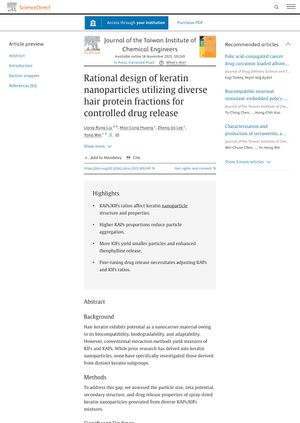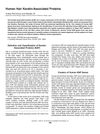Rational Design of Keratin Nanoparticles Utilizing Diverse Hair Protein Fractions for Controlled Drug Release
November 2023
in “
Journal of the Taiwan Institute of Chemical Engineers
”

TLDR Scientists made nanoparticles from human hair proteins to improve drug delivery.
The study "Rational design of keratin nanoparticles utilizing diverse hair protein fractions for controlled drug release" presents a novel approach to optimizing keratin nanoparticles for drug delivery. The researchers extracted keratin-associated proteins (KAPs) and keratin intermediate filaments (KIFs) from human hair using a modified Shindai method. They found that the ratio of KAPs/KIFs directly impacts the secondary structure of keratin nanoparticles. The study also revealed that temperatures below 200°C are crucial to preserve keratin peptide bonds and ensure uniform nanoparticle generation. Theophylline, a bronchodilator with poor solubility and bioavailability, was used as a model drug to evaluate the performance of these nanoparticles. The encapsulation of Theophylline within keratin nanoparticles may enhance its delivery, improve drug stability, and mitigate potential side effects. This research offers significant progress in the field of drug delivery, particularly in optimizing keratin nanoparticles.






